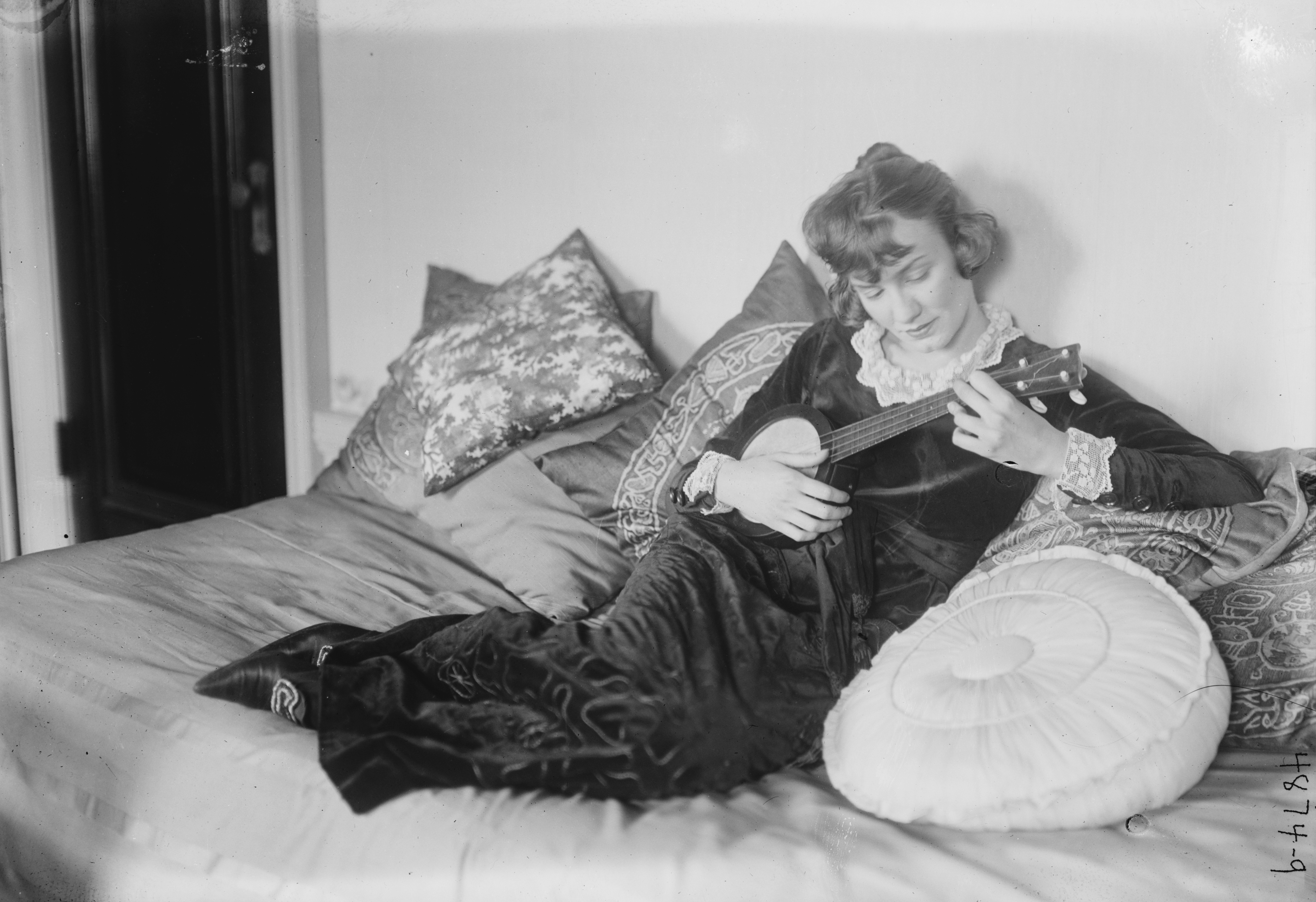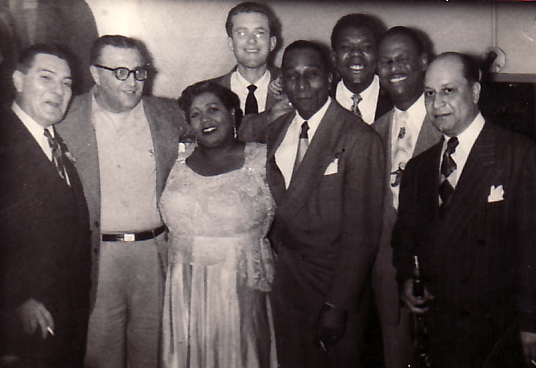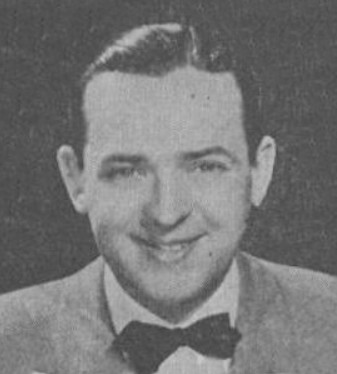|
The Ipana Troubadors
''The Ipana Troubadors'' (aka ''The Ipana Troubadours'') was a musical variety radio program which began in New York on WEAF in 1923. In actuality, the Troubadors were the Sam Lanin Orchestra. They opened the show with their theme, "Smiles." The show was sponsored by Bristol Myers' Ipana Toothpaste, and it was during this period that Bristol Myers introduced the slogan, "Ipana for the Smile of Beauty; Sal Hepatica for the Smile of Health." With a mix of hot foxtrots, sweet waltzes and snappy novelty tunes, the show moved from WEAF to the NBC Red Network (1926-28) for a 30-minute series on Wednesday evenings at 9pm. It then aired on the Blue Network (1929-31) Mondays at 8:30pm. Network radio exposure made the Ipana Troubadors one of the most well-known dance bands of the 1920s, resulting in a recording contract with Columbia and bookings at dance halls, such as the Casino at Bemus Point, New York. However, the recording contract covered only the Ipana Troubadors, so Lanin conti ... [...More Info...] [...Related Items...] OR: [Wikipedia] [Google] [Baidu] |
Ipana2
Ipana was a toothpaste product manufactured by Bristol-Myers Company. The wintergreen flavored toothpaste (0.243% sodium fluoride was its active ingredient) reached its peak market penetration during the 1950s in North America. Marketing of Ipana used a Disney-created mascot named Bucky Beaver in the 1950s. Introduction and early popularity Ipana was introduced in 1901 by the Bristol-Myers Company of New York. Ipana was an early and large sponsor on United States radio broadcasts starting in 1923 with the program ''The Ipana Troubadors''. A series of popular records was issued under that name by Columbia from 1925 through 1931. Sam Lanin was the leader and contractor of the studio group. From 1934 to 1940, the brand sponsored ''The Fred Allen Show'', which ran under the names ''The Hour of Smiles'' and ''Town Hall Tonight''. After Allen switched sponsors, Ipana sponsored ''It's Time to Smile'', with Eddie Cantor and Dinah Shore. With hexachlorophene In 1959, Bristol-Myers added ... [...More Info...] [...Related Items...] OR: [Wikipedia] [Google] [Baidu] |
The Hour Of Smiles
''The Fred Allen Show'' is a long-running American radio comedy program starring comedian Fred Allen and his wife Portland Hoffa. Over the course of the program's 17-year run, it was sponsored by Linit Bath Soaps, Hellmann's, Ipana, Sal Hepatica, Texaco and Tenderleaf Tea. The program ended in 1949 under the sponsorship of the Ford Motor Company. The most popular period of the program was the few years of sponsorship under The Texas Company. During this time, the program was known as ''Texaco Star Theatre with Fred Allen''. On the December 6, 1942 episode of the program, Allen premiered his first in a series of segments known as "Allen's Alley". The segments would have Allen strolling through an imaginary neighborhood, knocking on the "doors" of various neighbors, including average-American John Doe (played by John Brown), Mrs. Nussbaum (Minerva Pious), pompous poet Falstaff Openshaw (Alan Reed), Titus Moody (Parker Fennelly), and boisterous Southern senator Beauregard Claghorn ... [...More Info...] [...Related Items...] OR: [Wikipedia] [Google] [Baidu] |
American Music Radio Programs
American(s) may refer to: * American, something of, from, or related to the United States of America, commonly known as the "United States" or "America" ** Americans, citizens and nationals of the United States of America ** American ancestry, people who self-identify their ancestry as "American" ** American English, the set of varieties of the English language native to the United States ** Native Americans in the United States, indigenous peoples of the United States * American, something of, from, or related to the Americas, also known as "America" ** Indigenous peoples of the Americas * American (word), for analysis and history of the meanings in various contexts Organizations * American Airlines, U.S.-based airline headquartered in Fort Worth, Texas * American Athletic Conference, an American college athletic conference * American Recordings (record label), a record label previously known as Def American * American University, in Washington, D.C. Sports teams Soccer * B ... [...More Info...] [...Related Items...] OR: [Wikipedia] [Google] [Baidu] |
1920s American Radio Programs
Nineteen or 19 may refer to: * 19 (number), the natural number following 18 and preceding 20 * one of the years 19 BC, AD 19, 1919, 2019 Films * ''19'' (film), a 2001 Japanese film * ''Nineteen'' (film), a 1987 science fiction film Music * 19 (band), a Japanese pop music duo Albums * ''19'' (Adele album), 2008 * ''19'', a 2003 album by Alsou * ''19'', a 2006 album by Evan Yo * ''19'', a 2018 album by MHD * ''19'', one half of the double album ''63/19'' by Kool A.D. * ''Number Nineteen'', a 1971 album by American jazz pianist Mal Waldron * ''XIX'' (EP), a 2019 EP by 1the9 Songs * "19" (song), a 1985 song by British musician Paul Hardcastle. * "Nineteen", a song by Bad4Good from the 1992 album ''Refugee'' * "Nineteen", a song by Karma to Burn from the 2001 album ''Almost Heathen''. * "Nineteen" (song), a 2007 song by American singer Billy Ray Cyrus. * "Nineteen", a song by Tegan and Sara from the 2007 album '' The Con''. * "XIX" (song), a 2014 song by Slipknot. ... [...More Info...] [...Related Items...] OR: [Wikipedia] [Google] [Baidu] |
Marion Harris
Marion Harris (born Mary Ellen Harrison; April 4, 1896 – April 23, 1944) was an American popular singer who was most successful in the late 1910s and the 1920s. She was the first widely known white singer to sing jazz and blues songs.Ward, Elijah (2005). ''Escaping the Delta''. . Early life She was born Mary Ellen Harrison on April 4, 1896, probably in Indiana. She sang in vaudeville and movie theaters in Chicago around 1914. The dancer Vernon Castle introduced her to the theater community in New York City, where she debuted in the Irving Berlin revue ''Stop! Look! Listen!'' in 1915. Recordings In 1916, she began recording for Victor Records, singing a variety of songs, such as "Everybody's Crazy 'bout the Doggone Blues, but I'm Happy", " After You've Gone", "A Good Man Is Hard to Find", "When I Hear That Jazz Band Play" and her biggest success, "I Ain't Got Nobody" (originally titled "I Ain't Got Nobody Much"). In 1920, after Victor prevented her from recording W.C. Handy's " ... [...More Info...] [...Related Items...] OR: [Wikipedia] [Google] [Baidu] |
Joe Venuti
Giuseppe "Joe" Venuti (September 16, 1903 – August 14, 1978) was an American jazz musician and pioneer jazz violinist. Considered the father of jazz violin, he pioneered the use of string instruments in jazz along with the guitarist Eddie Lang, a friend since childhood. Through the 1920s and early 1930s, Venuti and Lang made many recordings as leader and as featured soloists. He and Lang became so well known for their 'hot' violin and guitar solos that on many commercial dance recordings they were hired to do 12- or 24-bar duos towards the end of otherwise stock dance arrangements. In 1926, Venuti and Lang started recording for the OKeh label as a duet (after a solitary duet issued on Columbia), followed by "Blue Four" combinations, which are considered milestone jazz recordings. Venuti also recorded commercial dance records for OKeh under the name "New Yorkers". He worked with Benny Goodman, Adrian Rollini, the Dorsey Brothers, Bing Crosby, Bix Beiderbecke, Jack Teagard ... [...More Info...] [...Related Items...] OR: [Wikipedia] [Google] [Baidu] |
Jack Teagarden
Weldon Leo "Jack" Teagarden (August 20, 1905 – January 15, 1964) was an American jazz trombonist and singer. According to critic Scott Yannow of Allmusic, Teagarden was the preeminent American jazz trombone player before the bebop era of the 1940s and "one of the best jazz singers too". Teagarden's early career was as a sideman with the likes of Paul Whiteman and lifelong friend Louis Armstrong. Early life Teagarden was born in Vernon, Texas, United States. His brothers Charlie and Clois "Cub" and his sister Norma also became professional musicians. His father was an amateur brass band trumpeter and started him on baritone horn; by age seven he had switched to trombone. His first public performances were in movie theaters, where he accompanied his mother, a pianist. , Encyclopedia of Jazz Mu ... [...More Info...] [...Related Items...] OR: [Wikipedia] [Google] [Baidu] |
Jimmy Dorsey
James Francis Dorsey (February 29, 1904 – June 12, 1957) was an American jazz clarinetist, saxophonist, composer and big band leader. He recorded and composed the jazz and pop standards "I'm Glad There Is You (In This World of Ordinary People)" and " It's The Dreamer In Me". His other major recordings were "Tailspin", " John Silver", " So Many Times", " Amapola", "Brazil ( Aquarela do Brasil)", " Pennies from Heaven" with Bing Crosby, Louis Armstrong, and Frances Langford, "Grand Central Getaway", and "So Rare". He played clarinet on the seminal jazz standards "Singin' the Blues" in 1927 and the original 1930 recording of "Georgia on My Mind", which were inducted into the Grammy Hall of Fame. Early life Jimmy Dorsey was born in Shenandoah, Pennsylvania, United States, the first son of Theresa Langton Dorsey and Thomas Francis Dorsey. His father, Thomas, was initially a coal miner, but would later become a music teacher and marching-band director. Both Jimmy and his younger ... [...More Info...] [...Related Items...] OR: [Wikipedia] [Google] [Baidu] |
Tommy Dorsey
Thomas Francis Dorsey Jr. (November 19, 1905 – November 26, 1956) was an American jazz trombonist, composer, conductor and bandleader of the big band era. He was known as the "Sentimental Gentleman of Swing" because of his smooth-toned trombone playing. His theme song was "I'm Getting Sentimental Over You". His technical skill on the trombone gave him renown among other musicians. He was the younger brother of bandleader Jimmy Dorsey. After Dorsey broke with his brother in the mid-1930s, he led an extremely successful band from the late 1930s into the 1950s. He is best remembered for standards such as "Opus No. 1, Opus One", "Song of India (song), Song of India", "Marie", "On Treasure Island", and his biggest hit single, "I'll Never Smile Again". Early life Born in Mahanoy Plane, Pennsylvania, Thomas Francis Dorsey Jr. was the second of four children born to Thomas Francis Dorsey Sr., a bandleader, and Theresa (née Langton) Dorsey. He and Jimmy, his older brother by slightly ... [...More Info...] [...Related Items...] OR: [Wikipedia] [Google] [Baidu] |
Tie-in
A tie-in work is a work of fiction or other product based on a media property such as a film, video game, television series, board game, web site, role-playing game or literary property. Tie-ins are authorized by the owners of the original property, and are a form of cross-promotion used primarily to generate additional income from that property and to promote its visibility. Types Common tie-in products include literary works, which may be novelizations of a media property, original novels or story collections inspired by the property, or republished previously existing books, such as the novels on which a media property was based, with artwork or photographs from the property. According to publishing industry estimates, about one or two percent of the audience of a film will buy its novelization, making these relatively inexpensively produced works a commercially attractive proposition in the case of blockbuster film franchises. Although increasingly also a domain of previ ... [...More Info...] [...Related Items...] OR: [Wikipedia] [Google] [Baidu] |
Advertising
Advertising is the practice and techniques employed to bring attention to a product or service. Advertising aims to put a product or service in the spotlight in hopes of drawing it attention from consumers. It is typically used to promote a specific good or service, but there are wide range of uses, the most common being the commercial advertisement. Commercial advertisements often seek to generate increased consumption of their products or services through "branding", which associates a product name or image with certain qualities in the minds of consumers. On the other hand, ads that intend to elicit an immediate sale are known as direct-response advertising. Non-commercial entities that advertise more than consumer products or services include political parties, interest groups, religious organizations and governmental agencies. Non-profit organizations may use free modes of persuasion, such as a public service announcement. Advertising may also help to reassure employees ... [...More Info...] [...Related Items...] OR: [Wikipedia] [Google] [Baidu] |
Fred Allen
John Florence Sullivan (May 31, 1894 – March 17, 1956), known professionally as Fred Allen, was an American comedian. His absurdist, topically pointed radio program ''The Fred Allen Show'' (1932–1949) made him one of the most popular and forward-looking humorists in the Golden Age of American radio. His best-remembered gag was his long-running mock feud with friend and fellow comedian Jack Benny, but it was only part of his appeal; radio historian John Dunning (in ''On the Air: The Encyclopedia of Old-Time Radio'') wrote that Allen was perhaps radio's most admired comedian and most frequently censored. A master ad libber, Allen often tangled with his network's executives (and often barbed them on the air over the battles) while developing routines whose style and substance influenced fellow comic talents, including Groucho Marx, Stan Freberg, Henry Morgan, and Johnny Carson; his avowed fans also included President Franklin D. Roosevelt, humorist James Thurber, and novel ... [...More Info...] [...Related Items...] OR: [Wikipedia] [Google] [Baidu] |





